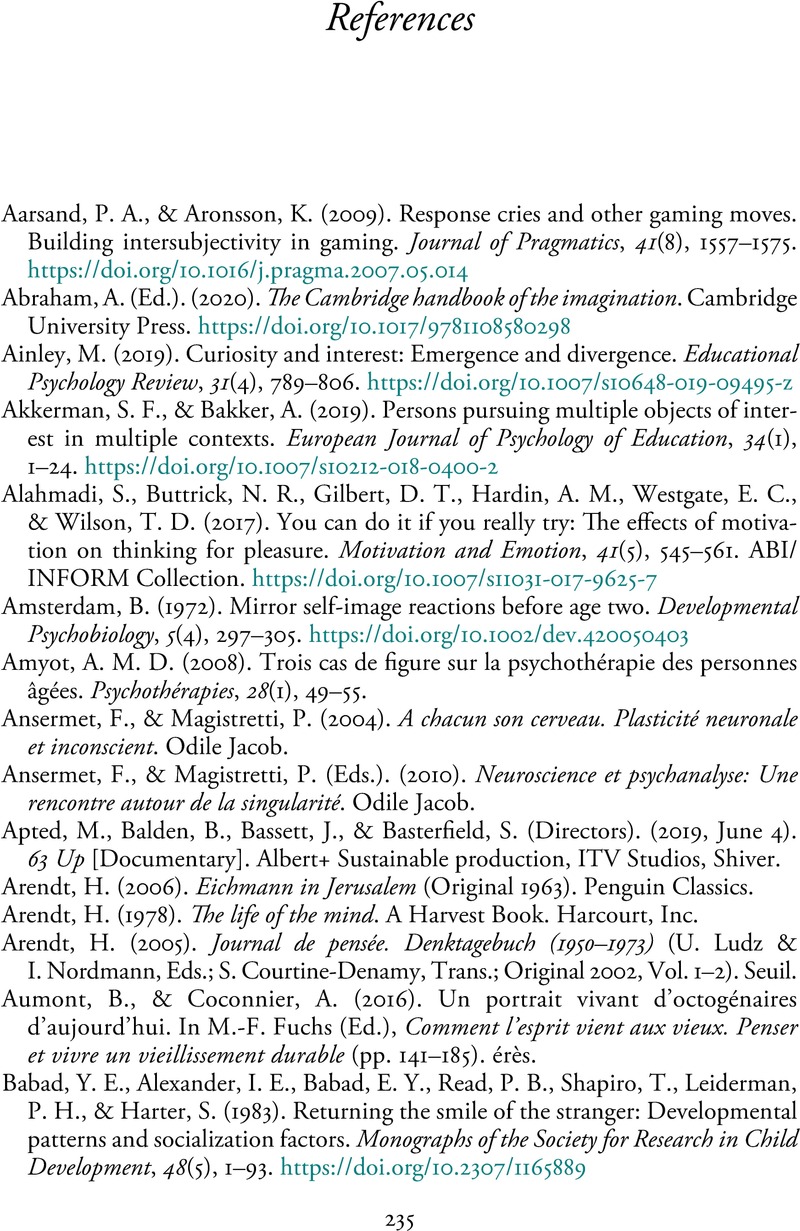Book contents
- The Pleasure of Thinking
- The Pleasure of Thinking
- Copyright page
- Dedication
- Contents
- Figures
- Foreword
- Chapter 1 The Pleasure of Thought
- Chapter 2 On the Emergence of Pleasurable Thinking
- Chapter 3 Thinking the Pleasures with Psychoanalysis
- Chapter 4 Thinking in Sociocultural Psychology
- Chapter 5 Thinking through the Psyche
- Chapter 6 The Pleasure of Thinking in Diverse Experiences
- Chapter 7 Trajectories of Pleasures in Thinking
- Chapter 8 Thinking Forward
- Notes
- References
- Index
- References
References
Published online by Cambridge University Press: 05 October 2023
- The Pleasure of Thinking
- The Pleasure of Thinking
- Copyright page
- Dedication
- Contents
- Figures
- Foreword
- Chapter 1 The Pleasure of Thought
- Chapter 2 On the Emergence of Pleasurable Thinking
- Chapter 3 Thinking the Pleasures with Psychoanalysis
- Chapter 4 Thinking in Sociocultural Psychology
- Chapter 5 Thinking through the Psyche
- Chapter 6 The Pleasure of Thinking in Diverse Experiences
- Chapter 7 Trajectories of Pleasures in Thinking
- Chapter 8 Thinking Forward
- Notes
- References
- Index
- References
Summary

- Type
- Chapter
- Information
- The Pleasure of Thinking , pp. 235 - 267Publisher: Cambridge University PressPrint publication year: 2023

